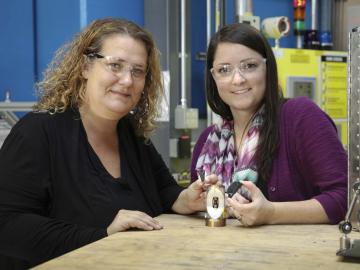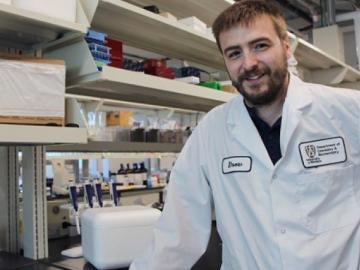
Filter News
Area of Research
- (-) Biology and Environment (44)
- (-) Neutron Science (28)
- Advanced Manufacturing (22)
- Biology and Soft Matter (1)
- Building Technologies (1)
- Computational Biology (1)
- Computational Engineering (1)
- Computer Science (5)
- Energy Science (119)
- Fuel Cycle Science and Technology (1)
- Fusion and Fission (33)
- Fusion Energy (10)
- Isotope Development and Production (1)
- Isotopes (27)
- Materials (108)
- Materials for Computing (17)
- National Security (32)
- Nuclear Science and Technology (39)
- Nuclear Systems Modeling, Simulation and Validation (1)
- Quantum information Science (4)
- Supercomputing (58)
News Topics
- (-) 3-D Printing/Advanced Manufacturing (15)
- (-) Big Data (11)
- (-) Chemical Sciences (15)
- (-) Coronavirus (20)
- (-) Cybersecurity (1)
- (-) Isotopes (2)
- (-) Microscopy (13)
- (-) Nuclear Energy (4)
- (-) Polymers (3)
- (-) Space Exploration (3)
- Advanced Reactors (2)
- Artificial Intelligence (14)
- Bioenergy (52)
- Biology (78)
- Biomedical (29)
- Biotechnology (14)
- Buildings (2)
- Clean Water (13)
- Composites (5)
- Computer Science (31)
- Critical Materials (1)
- Energy Storage (13)
- Environment (99)
- Exascale Computing (4)
- Fossil Energy (1)
- Frontier (4)
- Fusion (1)
- Grid (3)
- High-Performance Computing (22)
- Hydropower (9)
- Machine Learning (11)
- Materials (25)
- Materials Science (28)
- Mathematics (4)
- Mercury (7)
- Molten Salt (1)
- Nanotechnology (17)
- National Security (5)
- Neutron Science (120)
- Partnerships (6)
- Physics (11)
- Quantum Computing (1)
- Quantum Science (7)
- Security (4)
- Simulation (15)
- Summit (15)
- Transportation (8)
Media Contacts

Researchers at Oak Ridge National Laboratory were part of an international team that collected a treasure trove of data measuring precipitation, air particles, cloud patterns and the exchange of energy between the atmosphere and the sea ice.

To better understand how the novel coronavirus behaves and how it can be stopped, scientists have completed a three-dimensional map that reveals the location of every atom in an enzyme molecule critical to SARS-CoV-2 reproduction.

A team led by Dan Jacobson of Oak Ridge National Laboratory used the Summit supercomputer at ORNL to analyze genes from cells in the lung fluid of nine COVID-19 patients compared with 40 control patients.

Five researchers at the Department of Energy’s Oak Ridge National Laboratory have been named ORNL Corporate Fellows in recognition of significant career accomplishments and continued leadership in their scientific fields.

A team of researchers has performed the first room-temperature X-ray measurements on the SARS-CoV-2 main protease — the enzyme that enables the virus to reproduce.

Oak Ridge National Laboratory has licensed a novel method to 3D print components used in neutron instruments for scientific research to the ExOne Company, a leading maker of binder jet 3D printing technology.

COVID-19 has upended nearly every aspect of our daily lives and forced us all to rethink how we can continue our work in a more physically isolated world.

Does vaping and smoking e-cigarettes put you at higher risk of COVID-19 complications? UWindsor’s Drew Marquardt is trying to answer that question with research into how the toxicants in the oils of vapes and e-cigarettes affect lung function.

With the rise of the global pandemic, Omar Demerdash, a Liane B. Russell Distinguished Staff Fellow at ORNL since 2018, has become laser-focused on potential avenues to COVID-19 therapies.

In the race to identify solutions to the COVID-19 pandemic, researchers at the Department of Energy’s Oak Ridge National Laboratory are joining the fight by applying expertise in computational science, advanced manufacturing, data science and neutron science.


